Spring is an active time for all summer residents and gardeners. During this period, unexpected return frosts are often manifested, from which young shoots must be hidden. In addition to the usual film, advanced devices are used for these purposes, which preserve healthy vegetation on the open ground. Any covering material will save the bed from weeds, suitable for mulching.
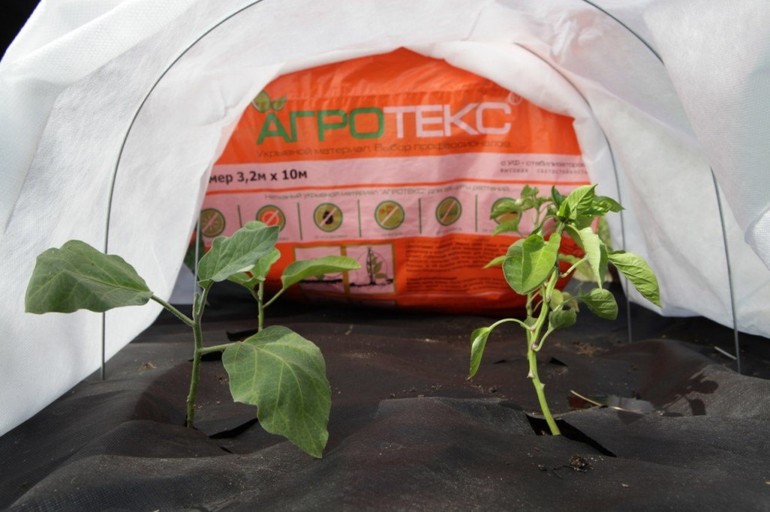
General concept
Spanbond is called the technological process for the production of non-woven type agrotextiles. The raw material base is polypropylene, the threads of which are interwoven with different methods and fixed on a special canvas. On the finished surface, small pores are retained that allow moisture, air and light to pass in sufficient quantities.
The density of the material created directly depends on the method of fixing the threads, and its indicators, in turn, determine the scope of use of the material, its physical features. Non-woven covering material is sold in the form of cones or covers, sheets of more than 20 meters, rolls. Concerning density, it is determined by the weight of propylene (grams) per 1 square meter:
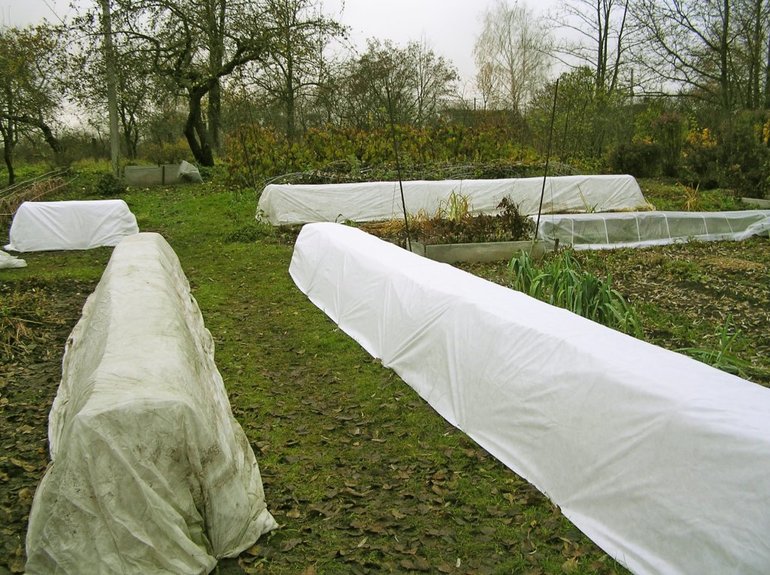
- The lightest and thinnest fabric has a weight of 17 to 30 g / m2. It can withstand a load of -3 degrees, closing the landing from small frosts, is considered a temporary shelter. However, in the case of careful use, it lasts several seasons. It is customary to throw this material on the protected section of the garden, the garden immediately after the completion of sowing work. But you must take into account the height of the plants that will rise. If the work is carried out with crops that are not susceptible to pollination, they remain uncovered until the harvest. Conveniently Agrofibre protect strawberries from subzero temperatures, fixing its edges with improvised heavy objects. Feeding and watering is carried out through the shelter, which at the same time remains dry.
- The material with indicators from 30 to 42 g / m2 differs in higher density. He confidently withstands frost to -6 degrees, hail blows. Usually unheated greenhouses and hotbeds get off with such a fabric. With the onset of winter, canvases should be removed and stored until the new season.
- The strongest covering fabric is considered a variation with a density of 60 g / m2, which is usually protected by greenhouses. The calculation of such a device, used all year round, up to -10 degrees. Such agrotextile is involved in the mulching of paths, beds. In some cases, ants are placed under such material, but they do not cause significant harm.
Benefits of using
Gardeners began to apply nonwoven material recently, however it quickly found wide distribution because of universality. The reason for this is the breathing structure, which is deprived of the usual film.
Black agrofibre with increased density is the best option to prevent the active growth of weeds. In this way, the need for weeding the beds is replaced, which is convenient when cultivating strawberries. In spring, the soil warms up quickly, while the top layer does not need to be loosened, since there is no dry crust that prevents air from reaching the roots. In winter, this covering material for plants:
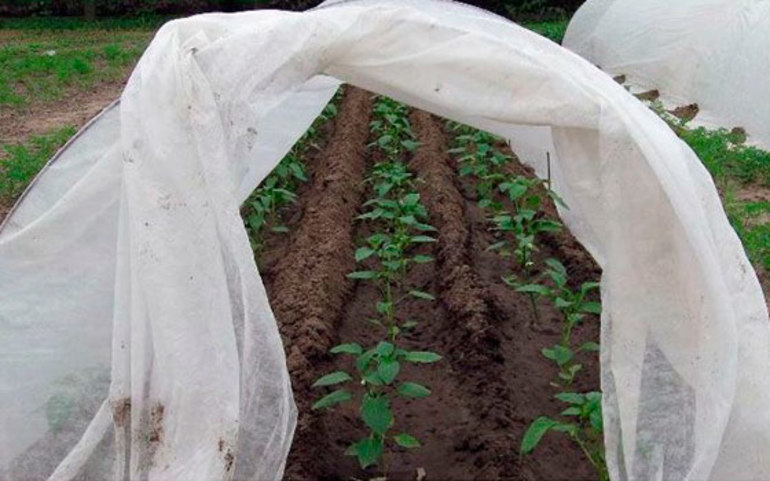
- will assist in protecting fragile landings from severe frosts, performing the function of snow in nature;
- after heavy rains, the crop remains completely clean and does not rot;
- the mustache does not have time to take root and is easily removed.
Sprouts are placed in the soil through special slots in the material through which moisture enters during irrigation. This method is suitable for mulching trees.
Rotting and heating of wood is prevented, it fully breathes. The plant is wrapped with a cloth in several layers or arcs are built around it, on which a protective device is pulled.
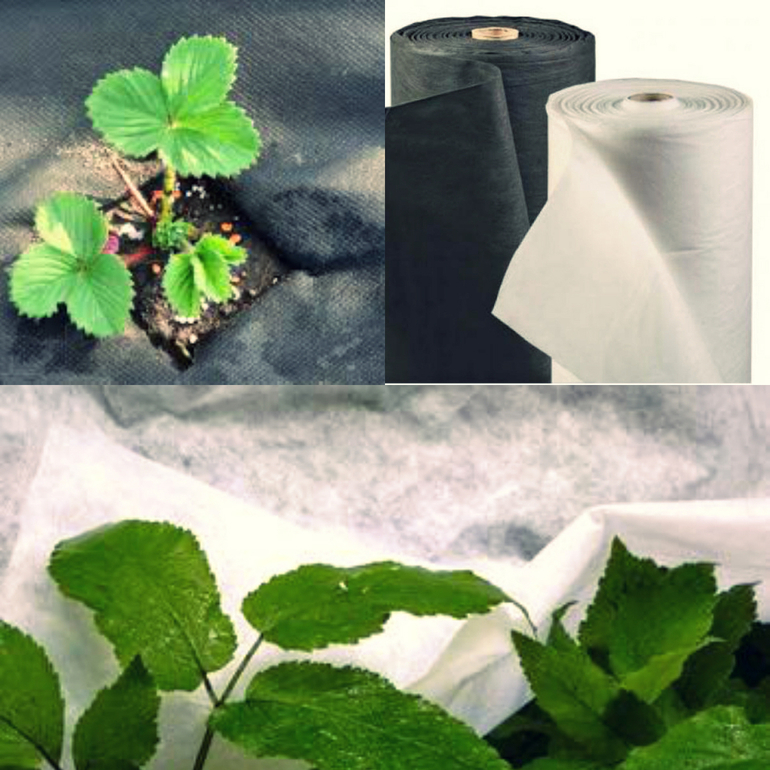
White covering material with low density is suitable for protecting planted plants from spring frosts, moisture and light pass through it well, but there are no living conditions for pests, insects. An earlier ripening of the crop is noted. Thermophilic shrubs, grapes are covered with such material. There is a compacted agrofibre with UV protection, it is used in greenhouses and greenhouses.
Some materials with a very high density index play the role of geotextiles in the farm. They do not lose their properties during sharp jumps in temperature, do not contain toxins. As a result, experienced agronomists get a large yield without the use of chemicals.
Polyethylene Films
Such materials have long taken root in the horticultural field. First of all, they are distinguished by affordable prices, but they will not be enough for more than one season, destruction occurs under sunlight. Manufacturers went further and improved these products, adding special stabilizers to the raw material base for them. Light stabilized canvases are distinguished by a multi-colored color, which does not impair quality indicators, but only determines the type of film. In practice, the following varieties are involved:
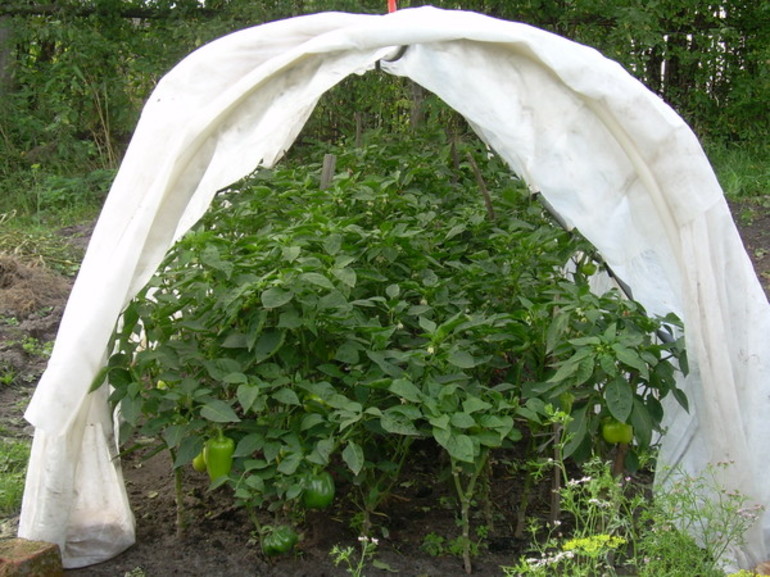
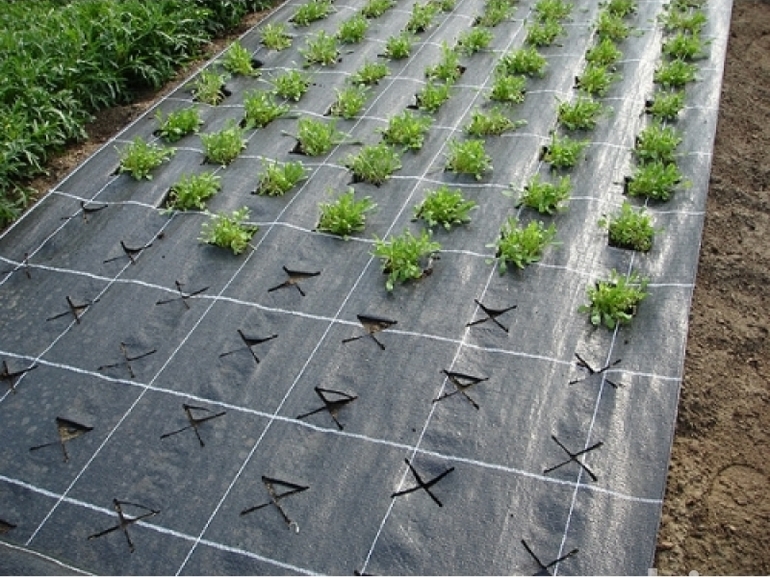
- The EVA type ethylene vinyl acetate coating has a shelf life of up to 5 years. It is easily recognizable to the touch, as it resembles rubber, is characterized by increased elasticity and durability, perfectly transmits light and air, and prevents the action of frosts.
- Hydrophilic cover material for bedscharacterized by its characteristic blue color, it provides UV protection. It contains components that prevent the formation of condensate. The resulting excess moisture, which can lead to rotting processes, simply flows in streams on the surface.
- A film with a greenish tint is characterized by heat-holding properties, which is especially true at night. Under such a coating, a temperature is created 5 degrees higher in comparison with the external environment.
- Orange or red garden cover has a unique ability to convert ultraviolet radiation into infrared radiation, which has a beneficial effect on vegetative growth. This type of film is often used in northern latitudes, where there is a lack of sunlight. The fact is that the canvas exhibits a high dispersion coefficient.
- Multilayer film protection with bubbles that are sealed between the layers and perfectly retain heat. This is precisely the reason for the increased thermal protection required in greenhouse conditions.It should be noted that large bubbles transmit light better, however, they reduce strength indicators.
- The universal product is represented by a film into which reinforced fiberglass is implanted. Great for building greenhouses, it is able to cut off about 30% of ultraviolet radiation. In case of damage to the film, the glass fiber keeps the material from sprawling.
Material Comparison
It is difficult to say with certainty which covering material for beds and greenhouses. This or that type is intended for specific goals and objectives.. In some cases, coatings are combined to provide greater protection to the stands. You should not radically choose a spanbond or film and refuse another option. Such canvases differ in their characteristics, with their competent combination, optimal conditions for plants are created.
In the case when the summer cottage is visited only on the weekend, the use of film is not recommended. It creates a strong greenhouse effect, without periodic opening of the plant can die. Agrofibre in such a situation would be appropriate. Practice shows that young shoots develop faster precisely under the film, but at later stages they level out in growth.

If we talk about spanbond, moisture seeps through it well, during irrigation the planting may not be opened. This saves time on planting care. In addition, leaves in contact with such material do not undermine and retain their original appearance.
It should be understood that the agrofibre is not suitable for covering tomatoes or grapes. Such plants must be protected from seasonal rainfall, which can lead to the development of mold and fungal infections. In this situation, it is worth using a film.
The beds under the plastic material quickly warm up, so they should fit the entire greenhouse. To ensure a comfortable internal temperature, it is recommended to throw a spanbond on the arcs, which can simply be superimposed on plants. In the latter case, polyethylene is not appropriate; under it, the seedlings will suffocate.
It is better to cover plantings from rainfall on open soil and from overheating in a greenhouse with film material in the form of a roof. In this case, the side part is more appropriate to sheathe with a breathable coating.
Shading mesh
It refers to covering materials made of acrylic, polypropylene. Often in its composition there is an ultraviolet stabilizer. On sale there is a grid of white or green. The standard size is 4 m, if necessary, the mesh is made to order. The scope of such a product is protection against the scorching sunlight of vineyards, greenhouses, young seedlings, fruit trees. Often, the grid is involved in harvesting, performing the function of the underlying canvas.
The main criterion to be guided in making a decision, which of the paintings to choose, is the expected result that they should show. When mulching, black spunbands are indispensable. Their white options will provide reliable protection against frost. Such devices are of high cost. But with professional crop cultivation, money investments are very quickly justified. In addition, you will not have to buy new materials annually and build shelters, greenhouses again.

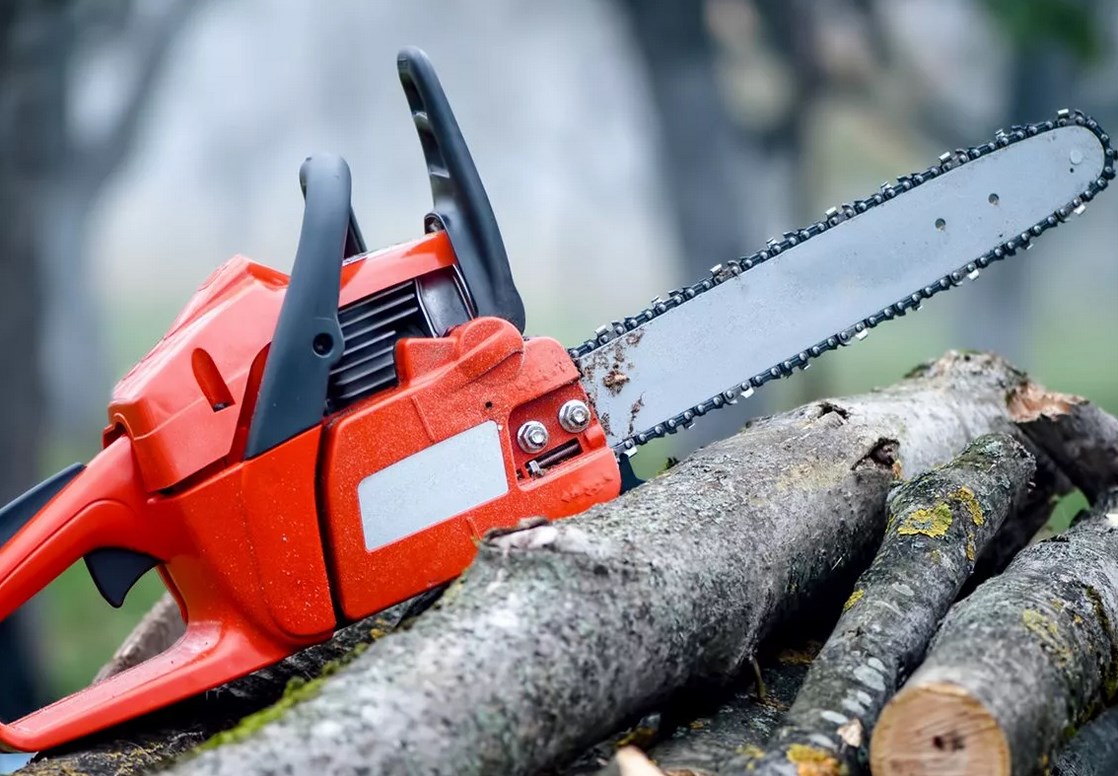
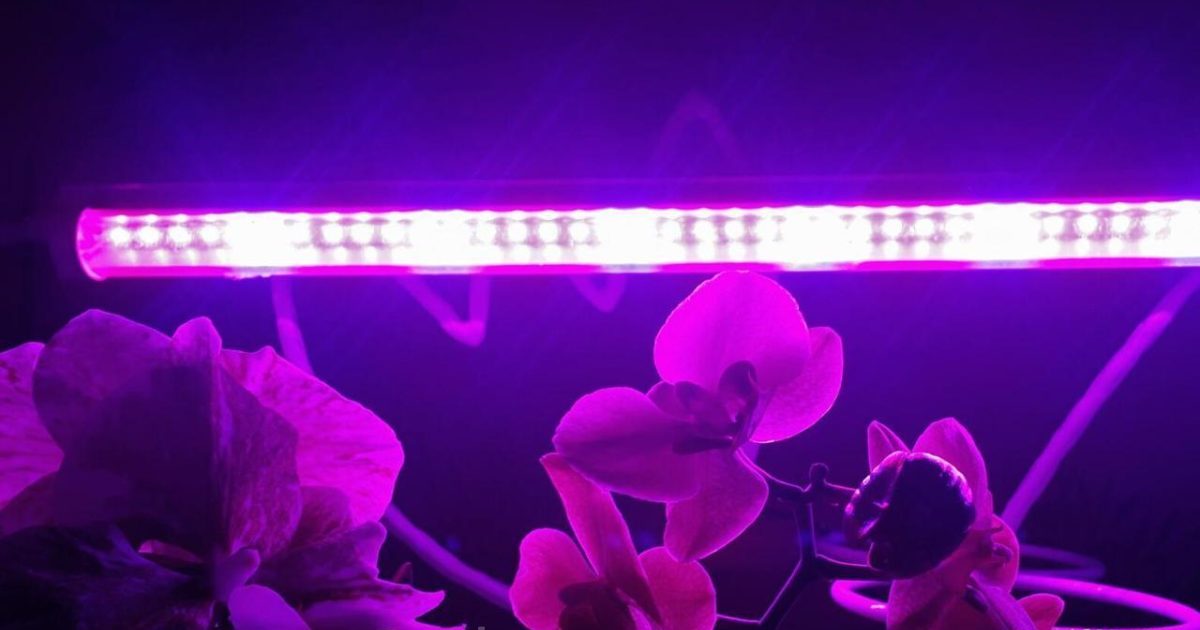
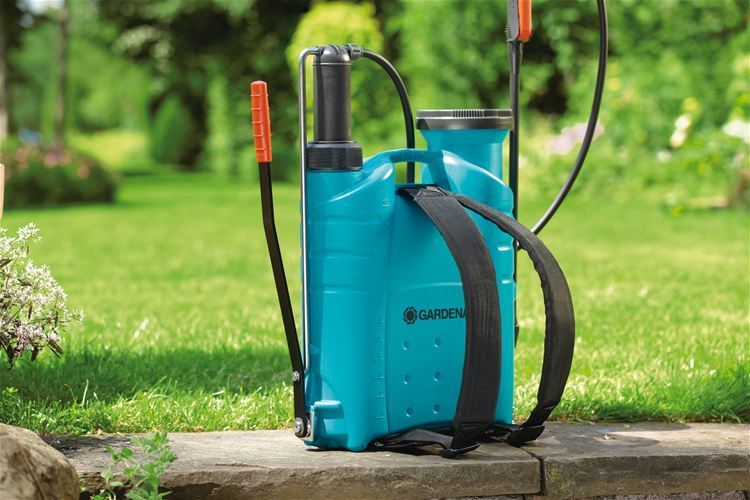
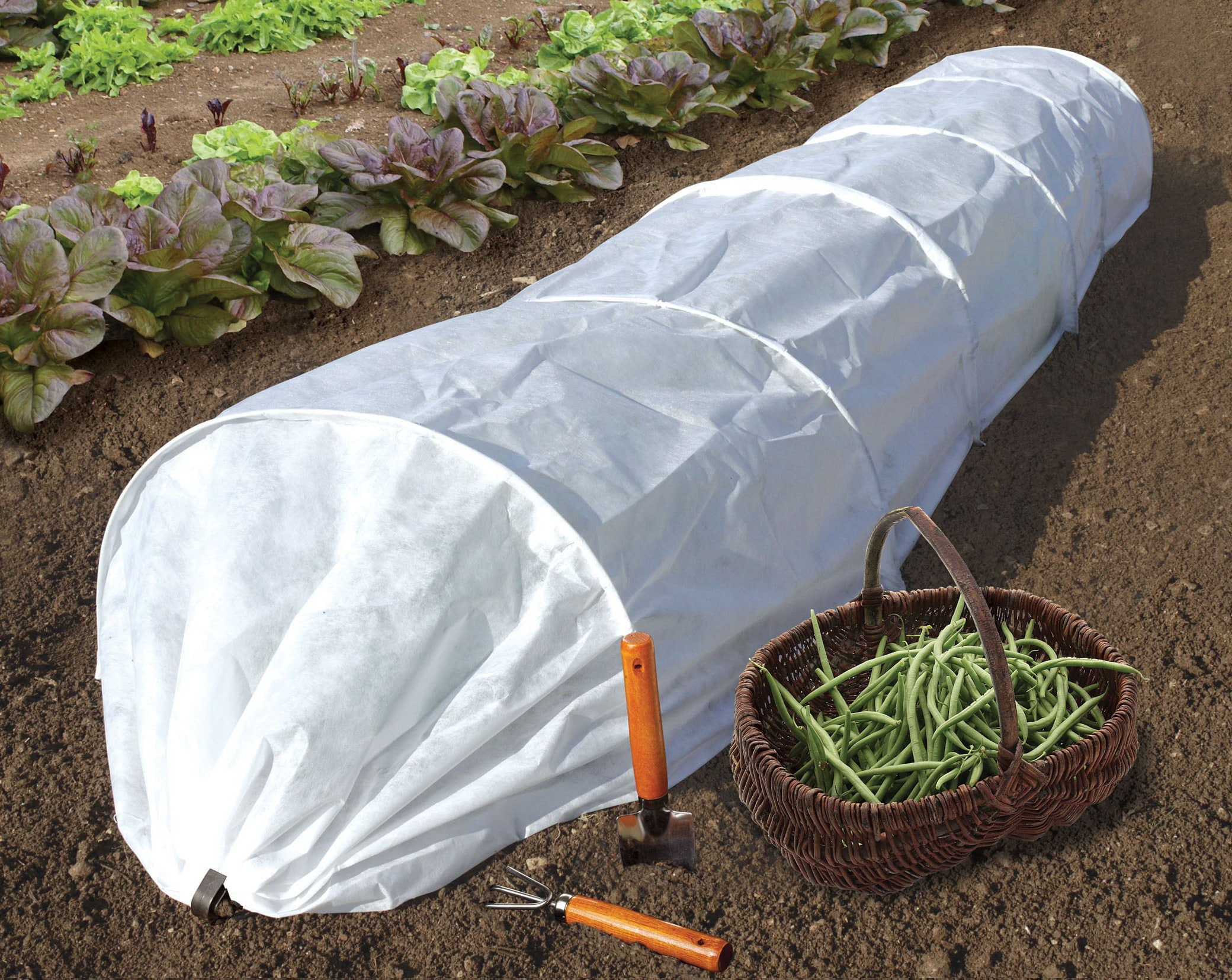 Cover material for plant care: features of use
Cover material for plant care: features of use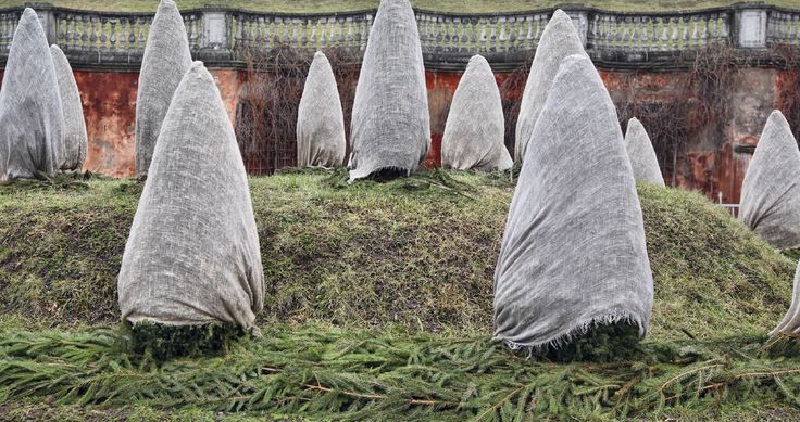 Types of winter covering material for plants
Types of winter covering material for plants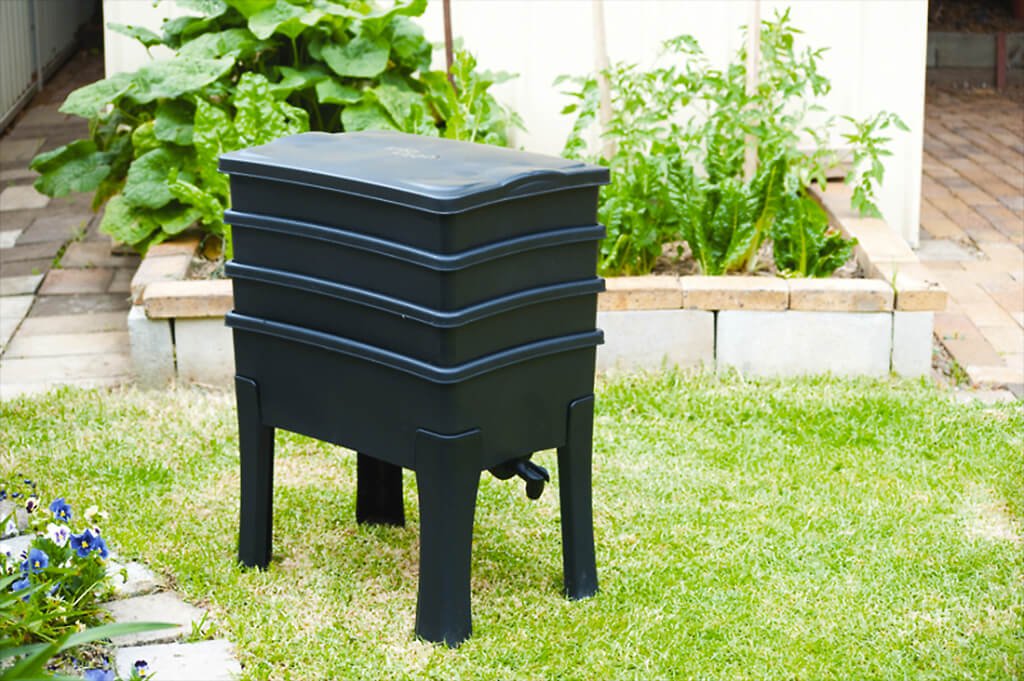 Farm for the extraction of vermicompost
Farm for the extraction of vermicompost What covering material to choose for a greenhouse?
What covering material to choose for a greenhouse?